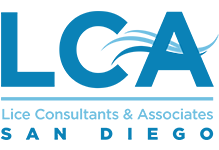Don’t have head lice take away your children’s summer of fun!
Now that school is over you may think you have avoided head lice. Unfortunately, summer is one of the peak seasons for head lice. Lice are most commonly spread on children ages 4-11 and even tough they may not be going to school they still have contact with other children their age: on vacation, at summer camps or even with the family. A couple tips will help you prevent or spot an infestation, after all an infestation caught early is always easier to deal with!
– Keep your child’s hair on a pony tale or braided. This will avoid further contact with other children’s hair and there fore lice will unlikely crawl to their heads.
– Remind them to not use other children’s jackets, helmets, hats, etc.
– Screen them every week and look for nits (eggs). They may be confused by dandruff but they stick to the hair while dandruff will move or fly off. They will be, most likely, 1 inch or less from the scalp.
– Look for head lice symptoms: scratching of the head, sensation of crawling, problems sleeping (lice are more active at night), etc.
Most importantly, if you suspect you child have lice, bring them in so we can professionally screen their heads. Should they need a treatment, we will provide a safe, and highly effective 1 hour treatment using our device that dehydrates lice & nits through heated air. Find out more about our services & pricing.





